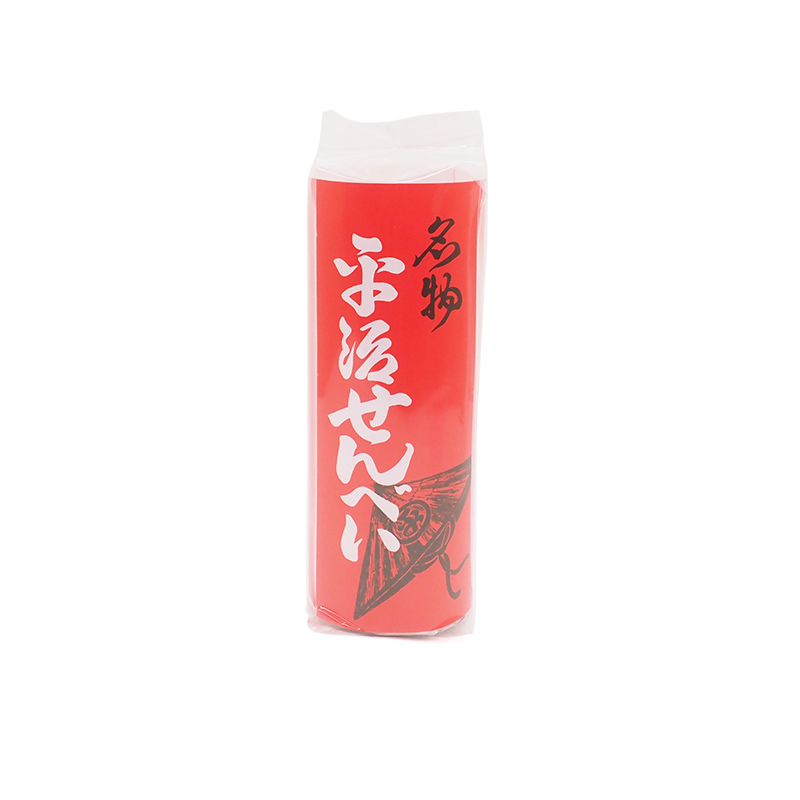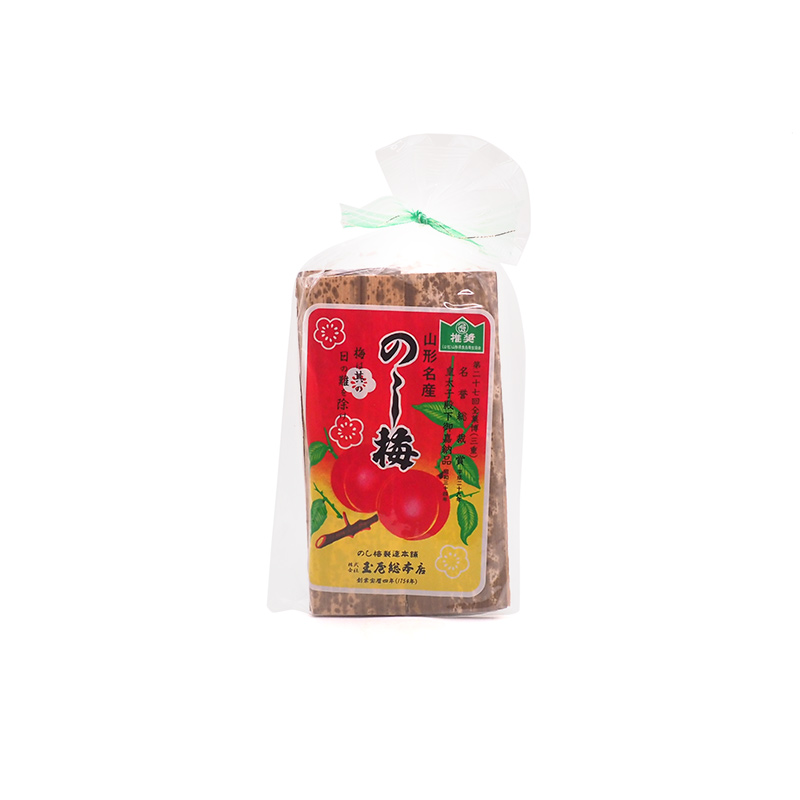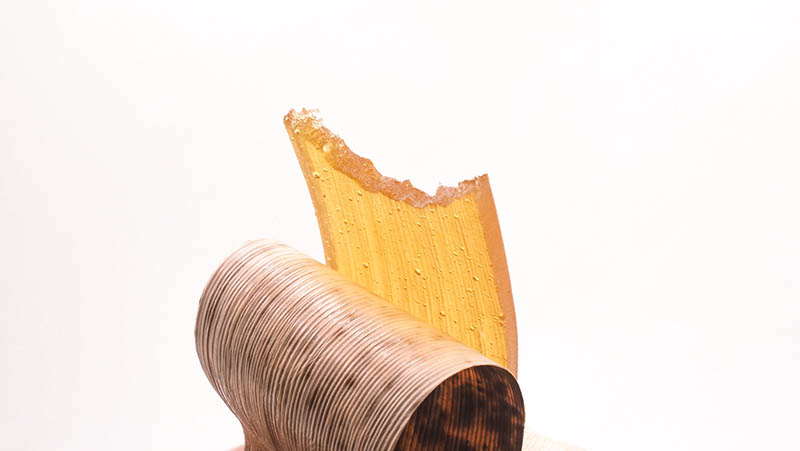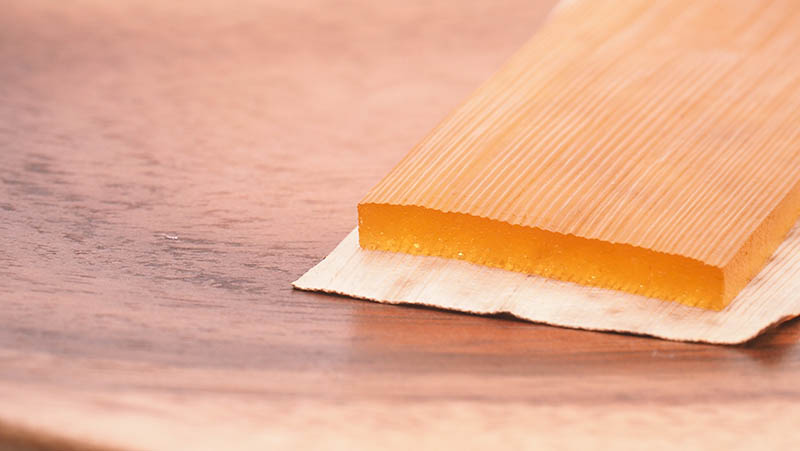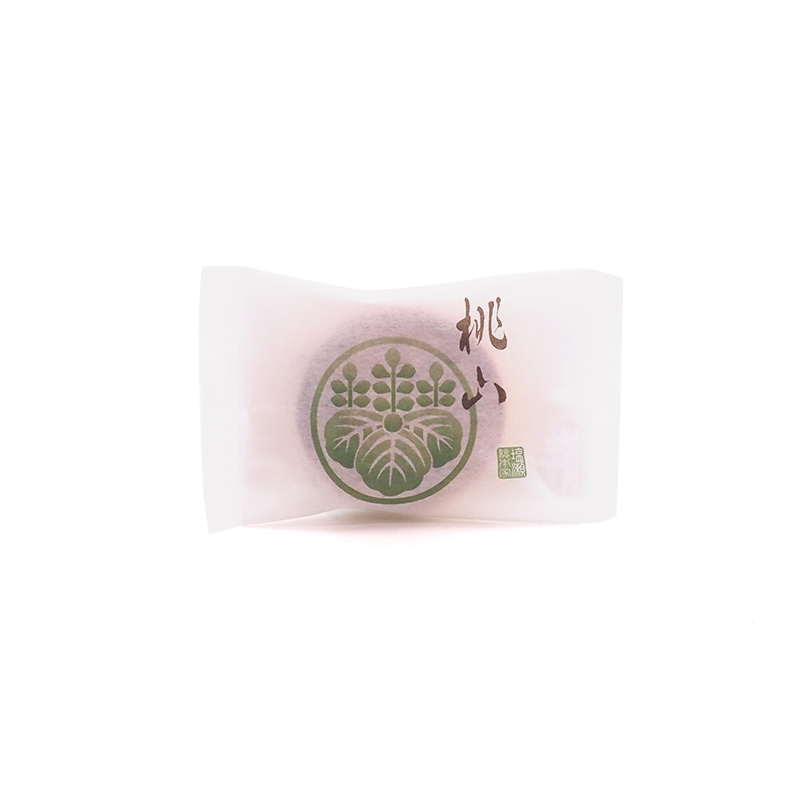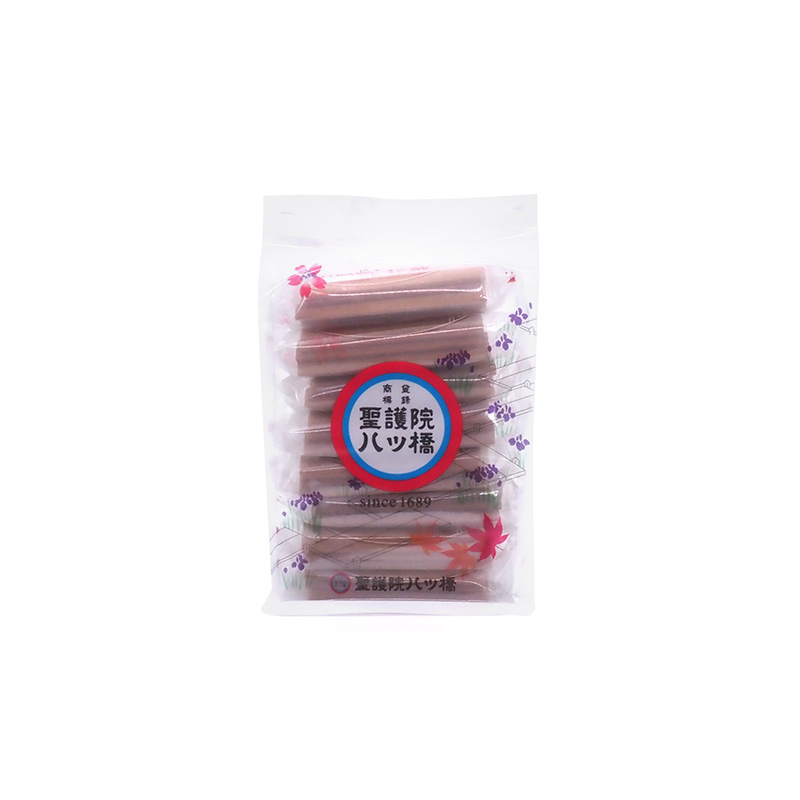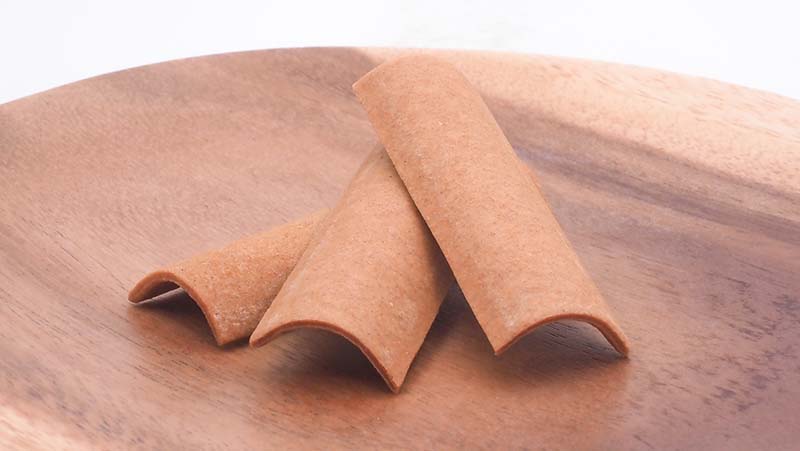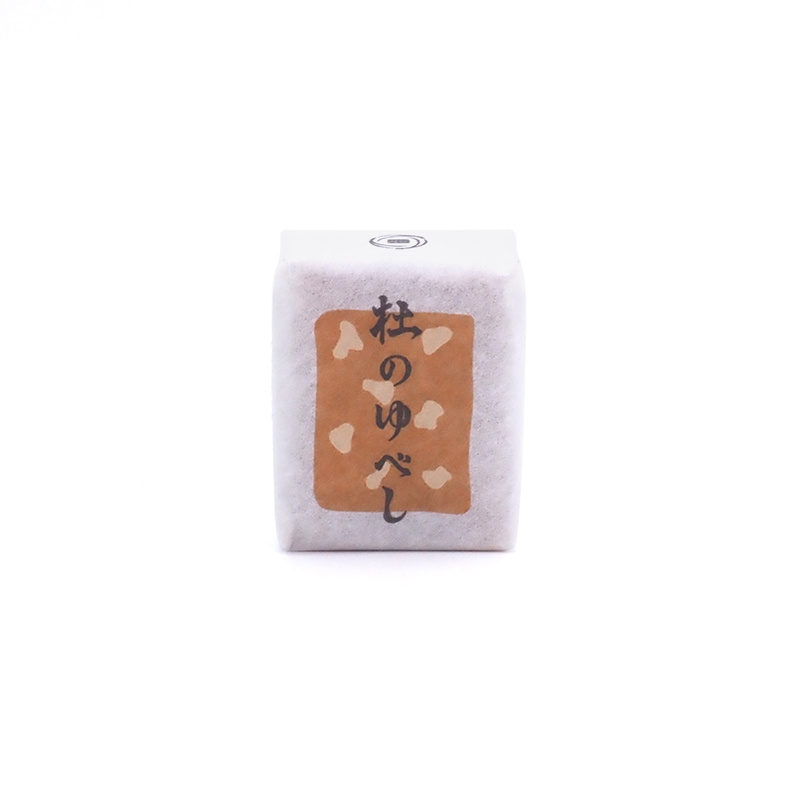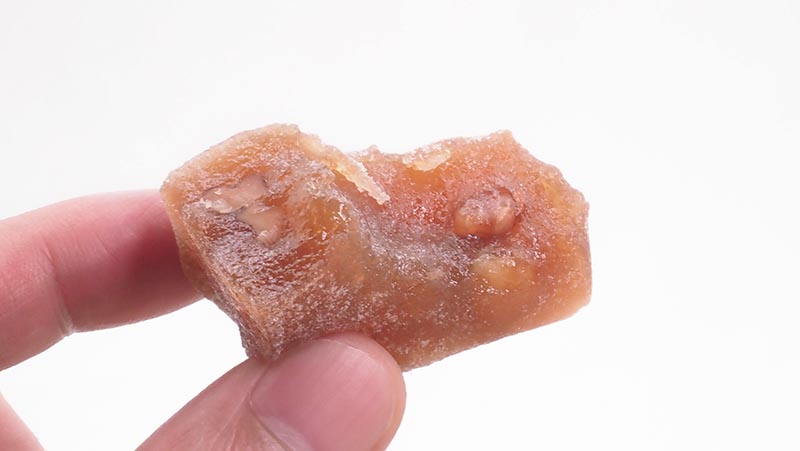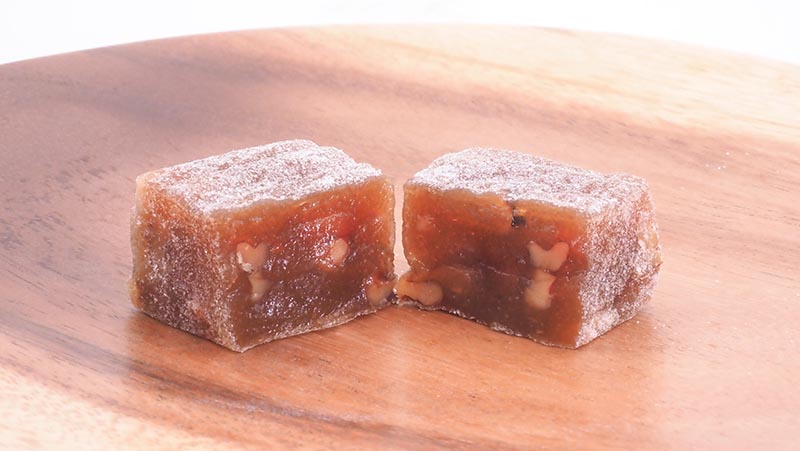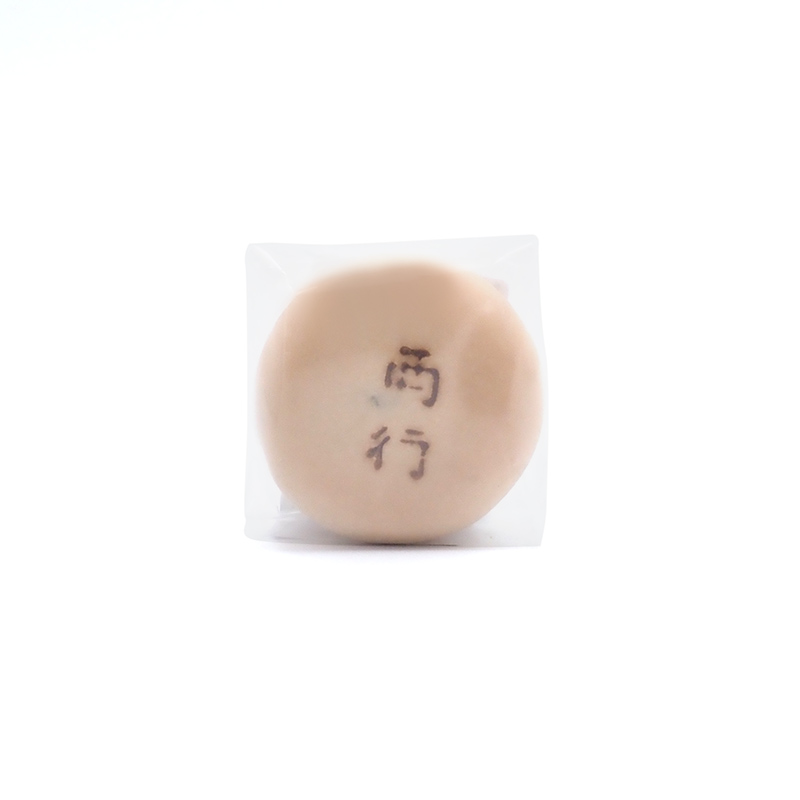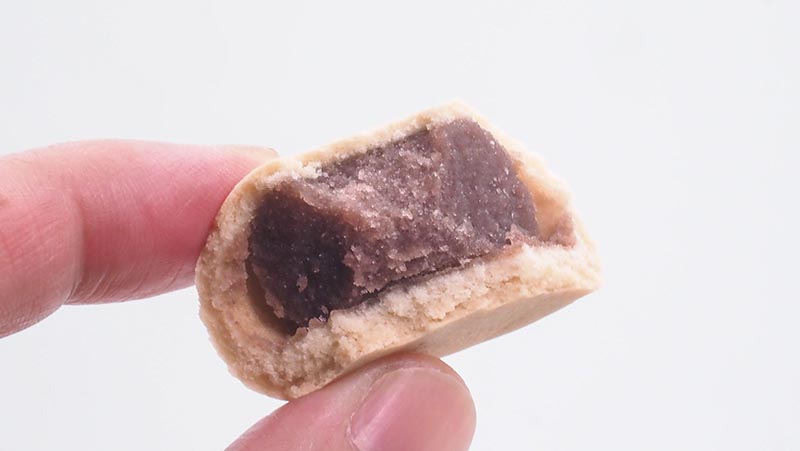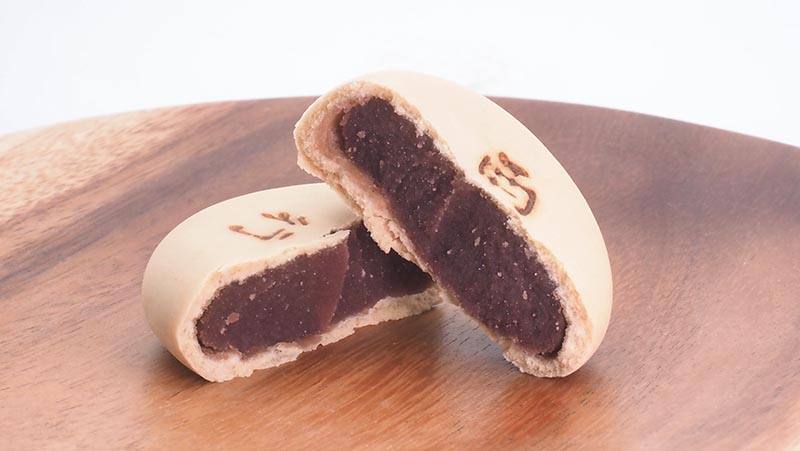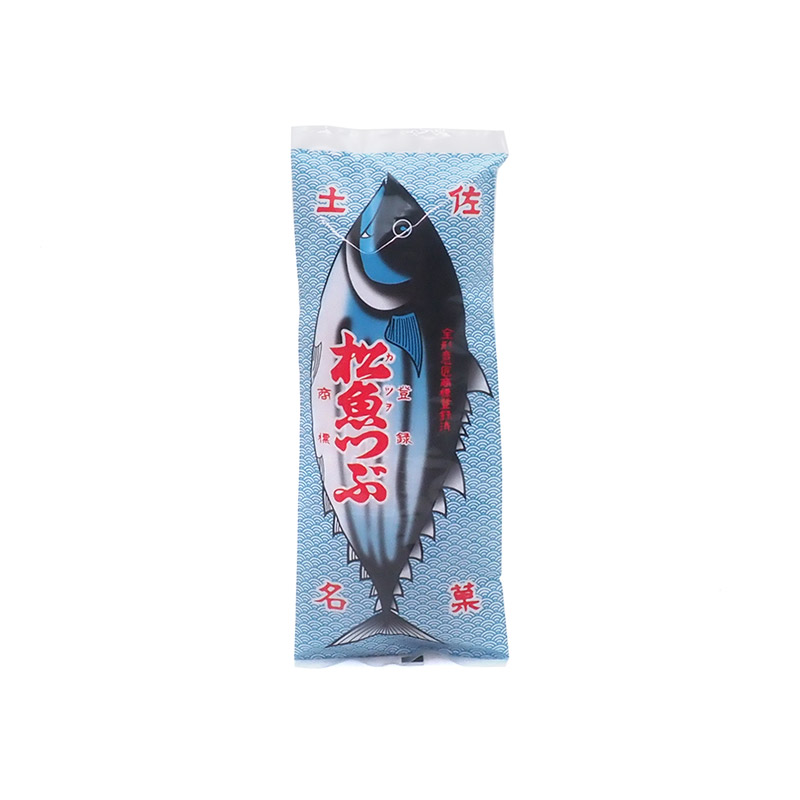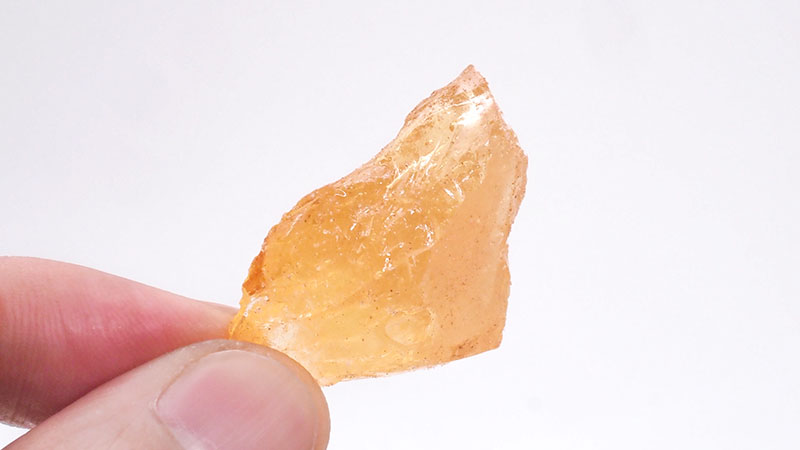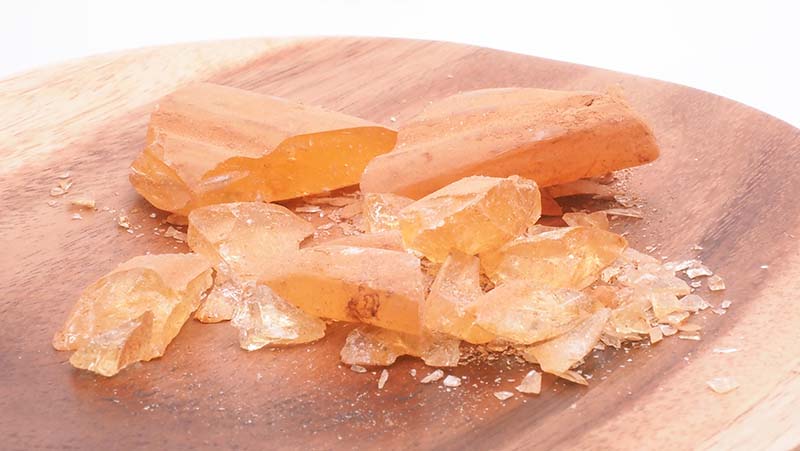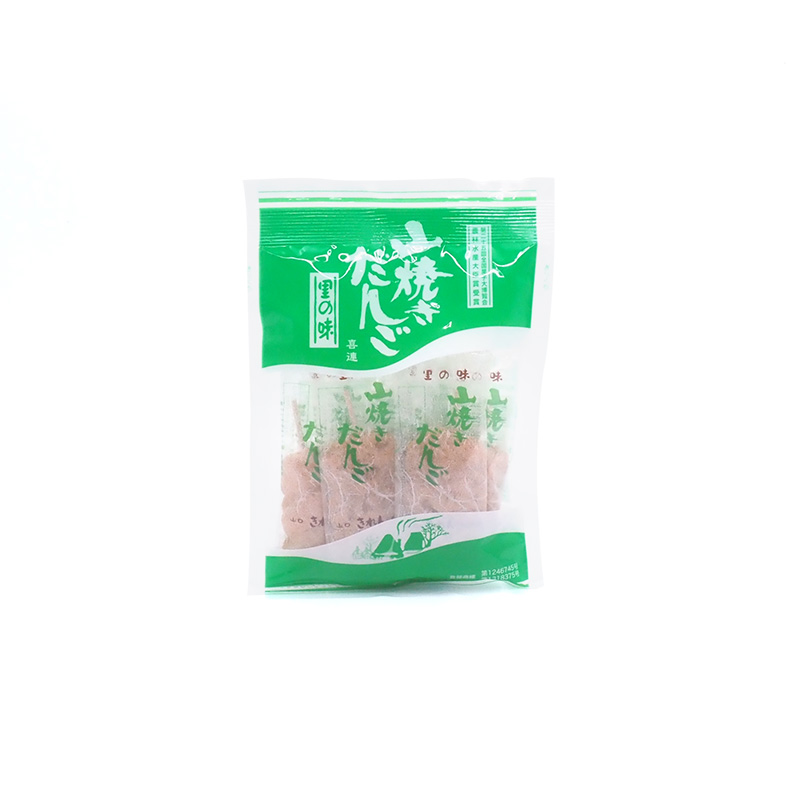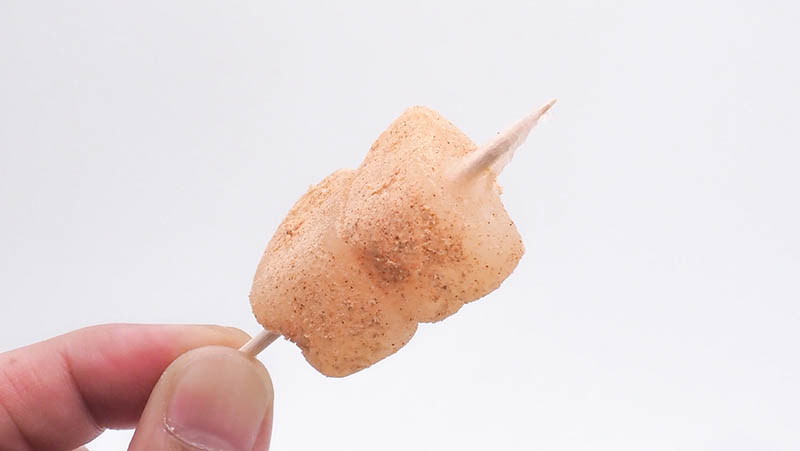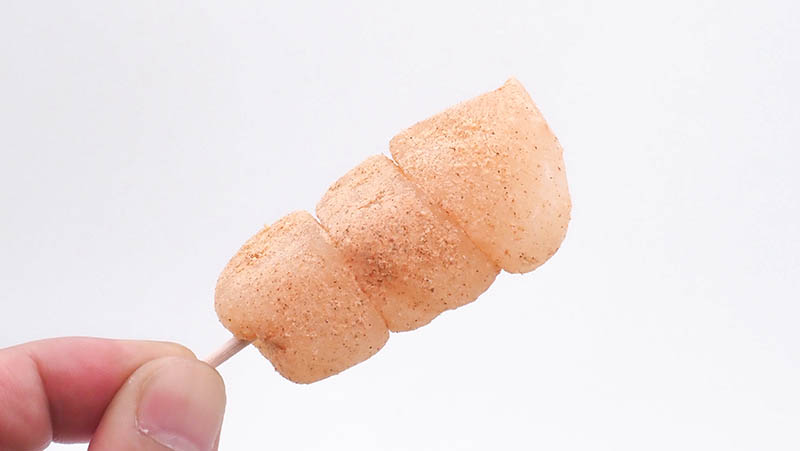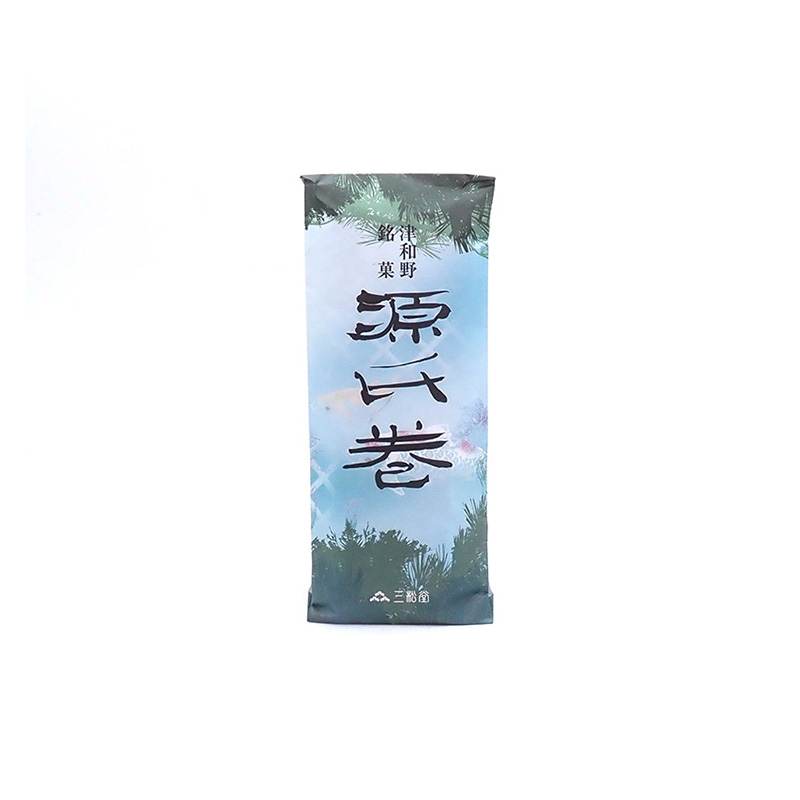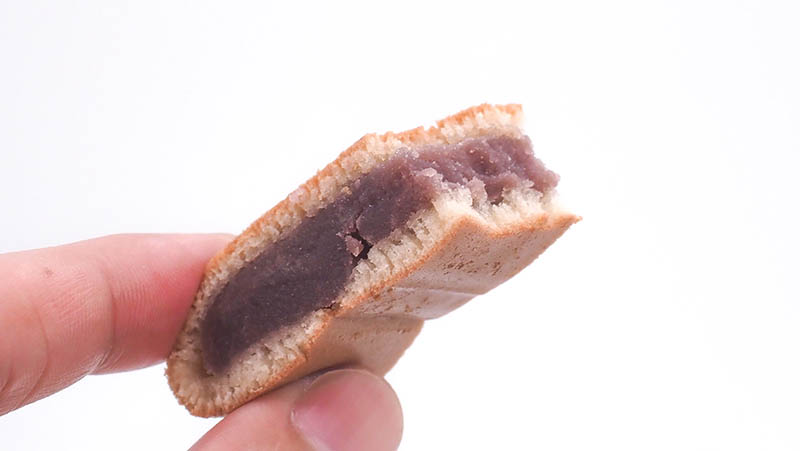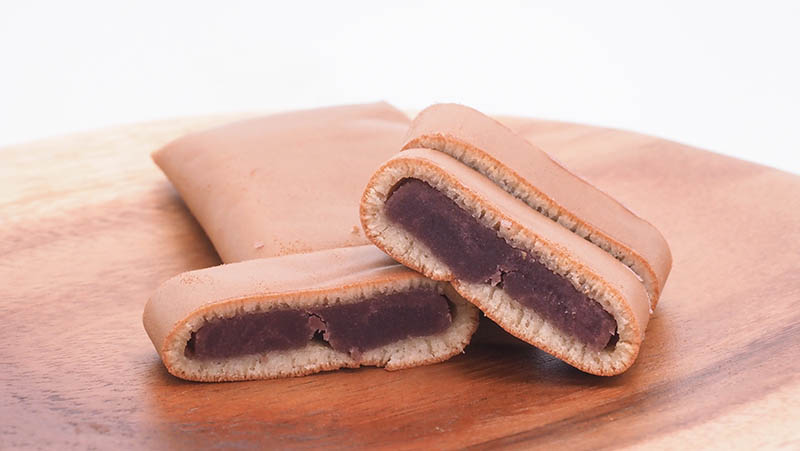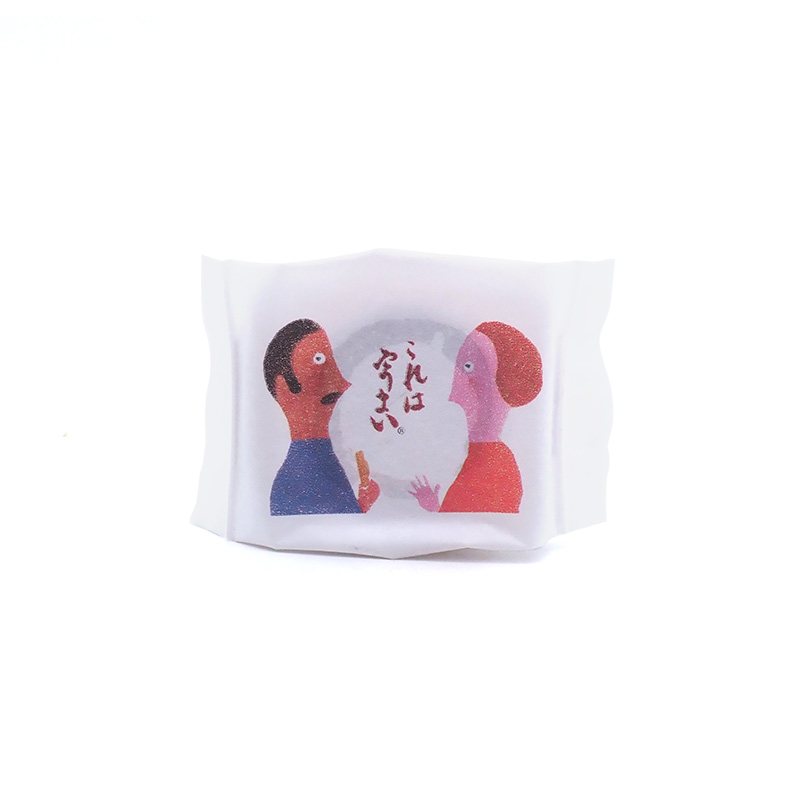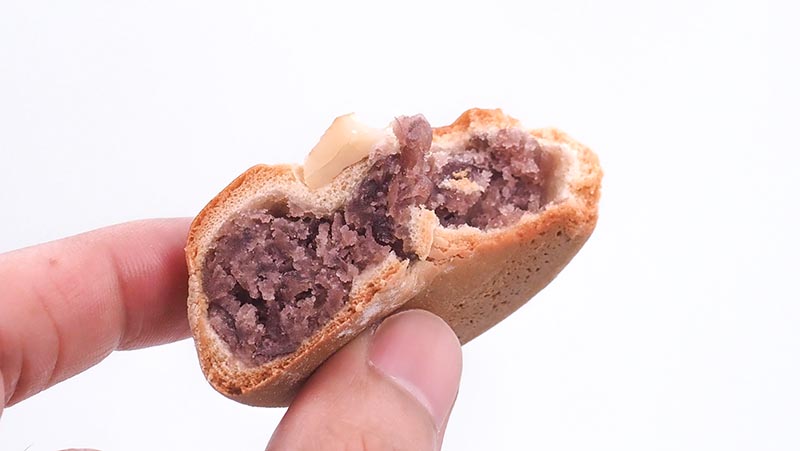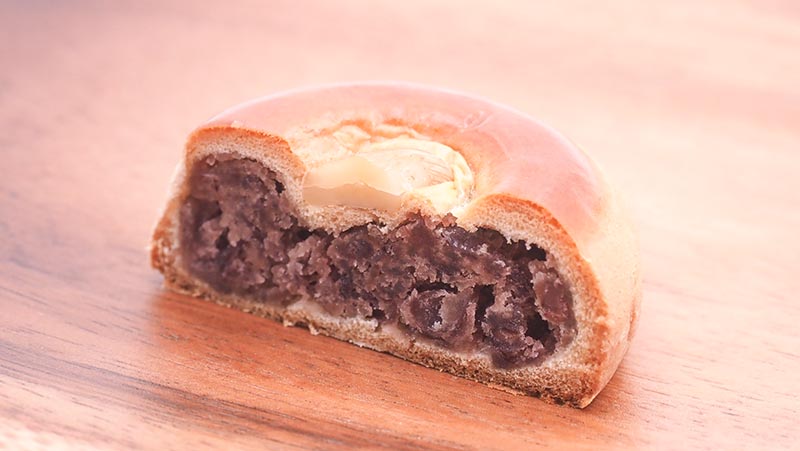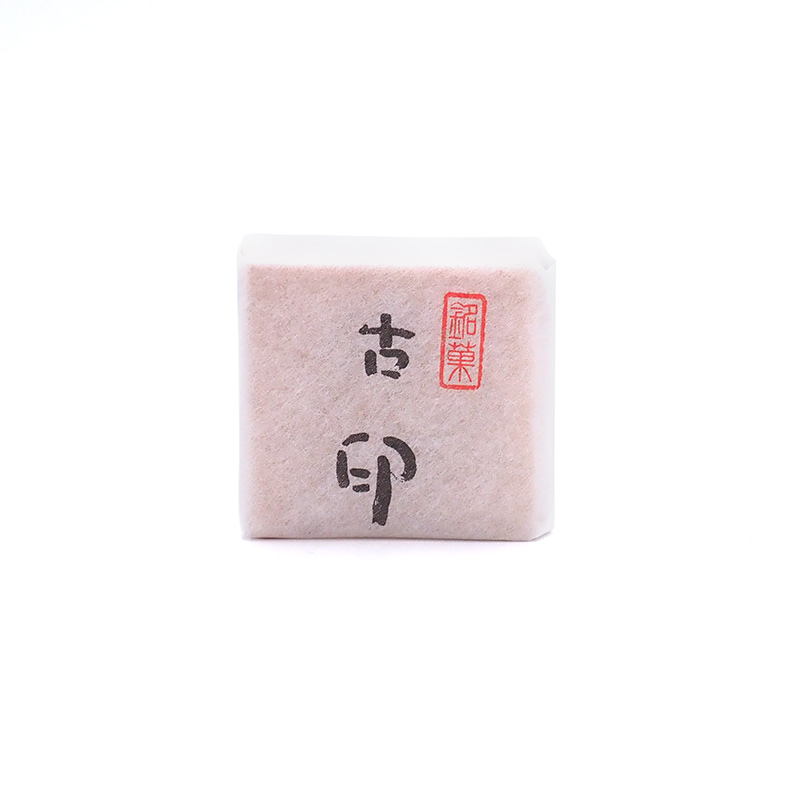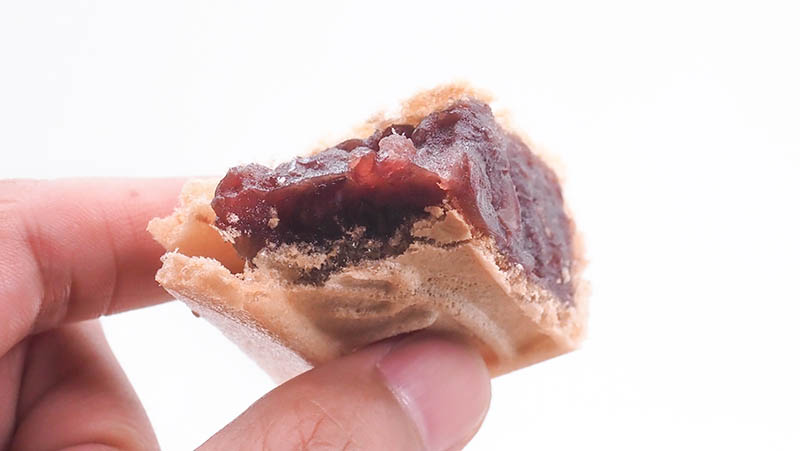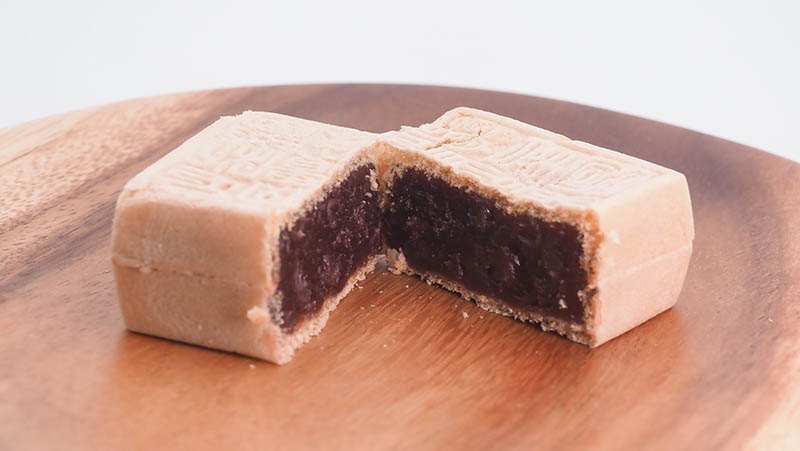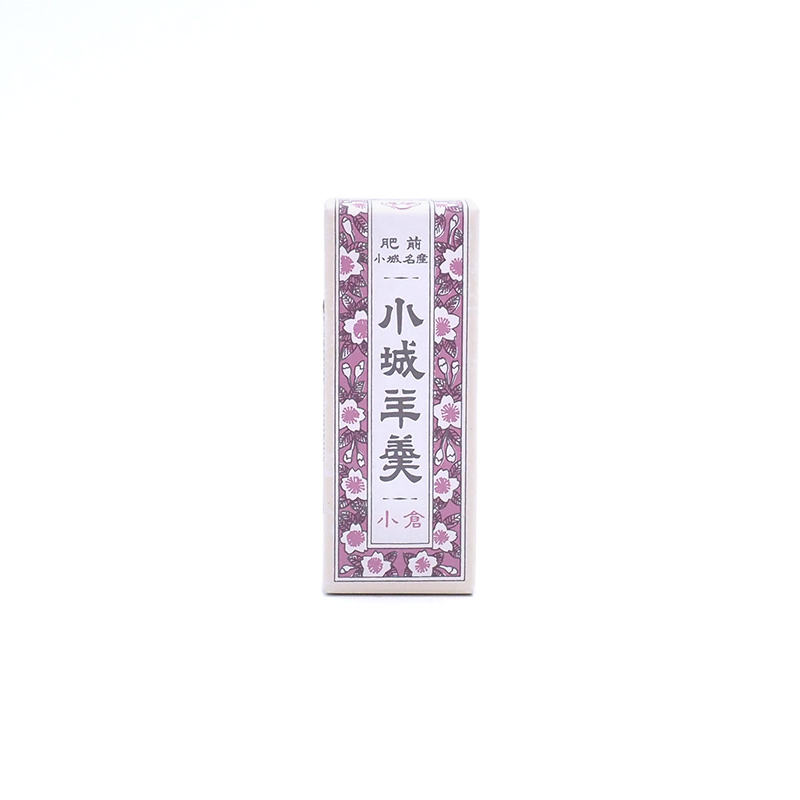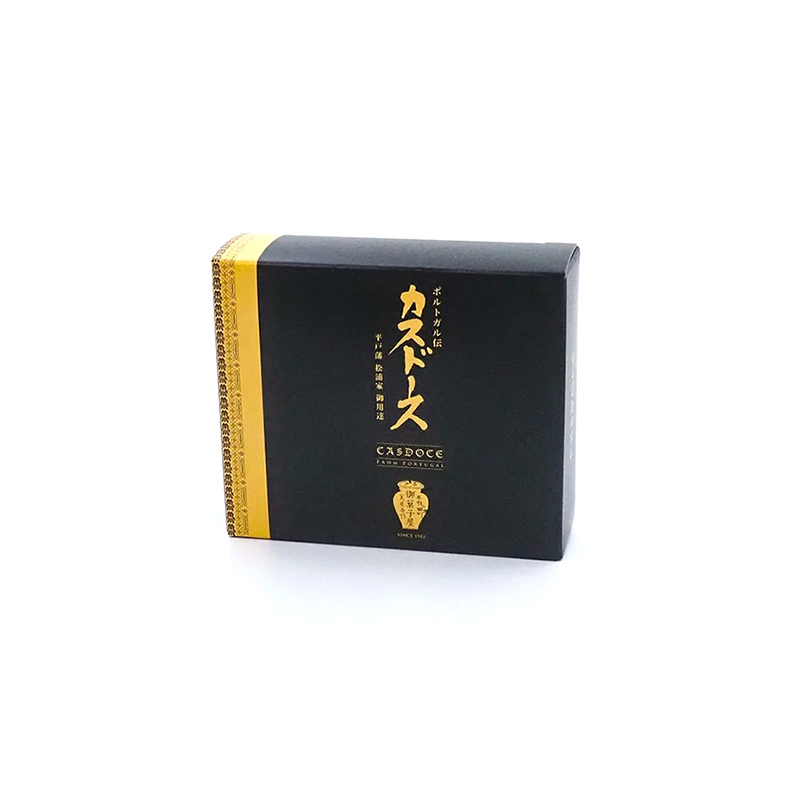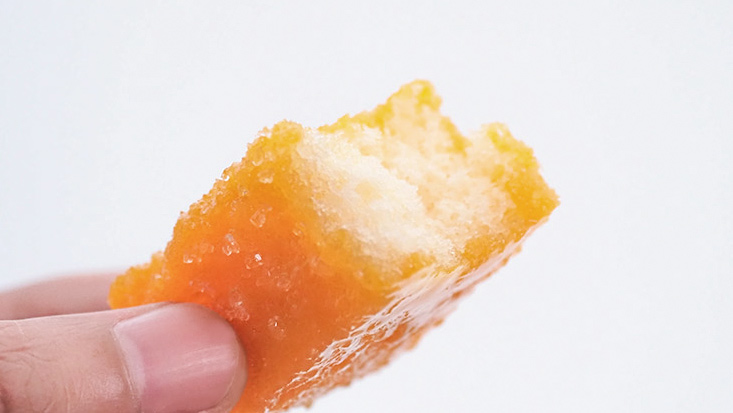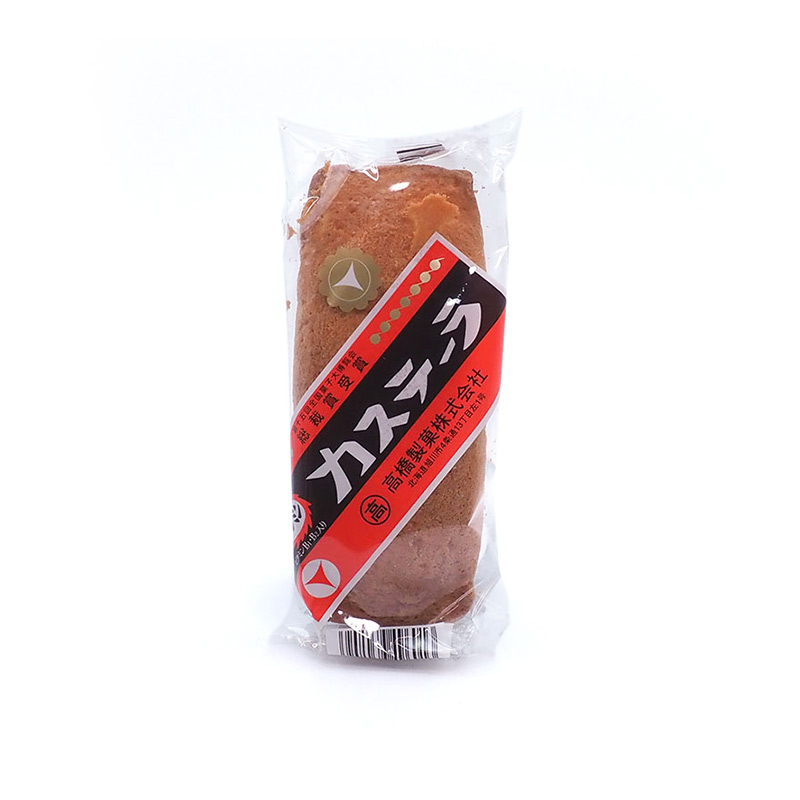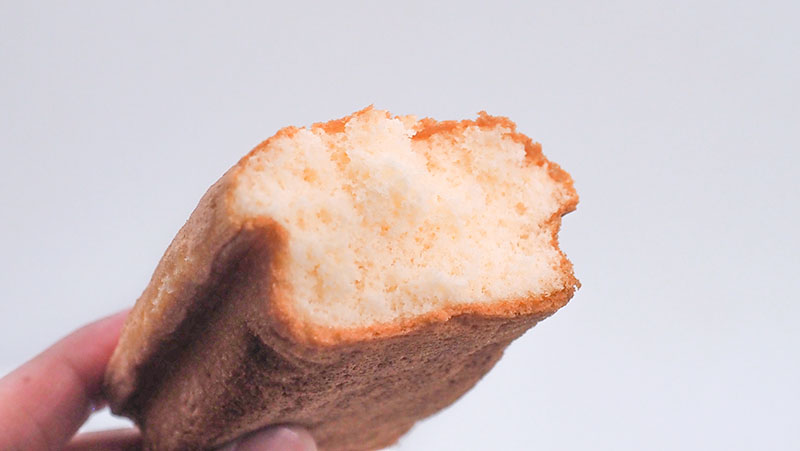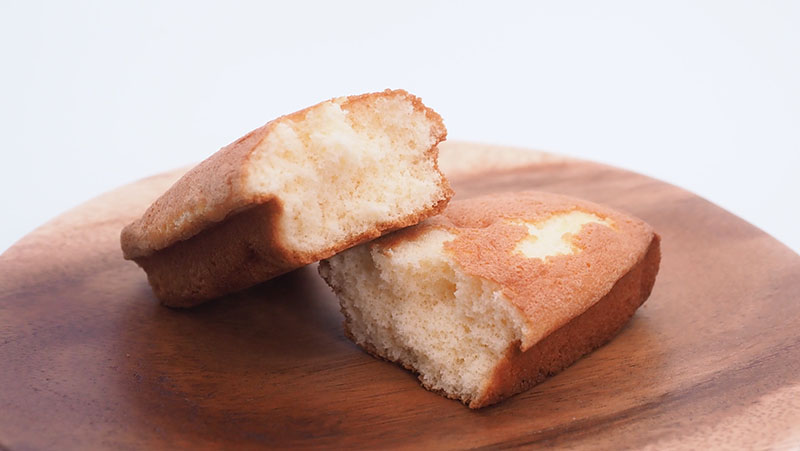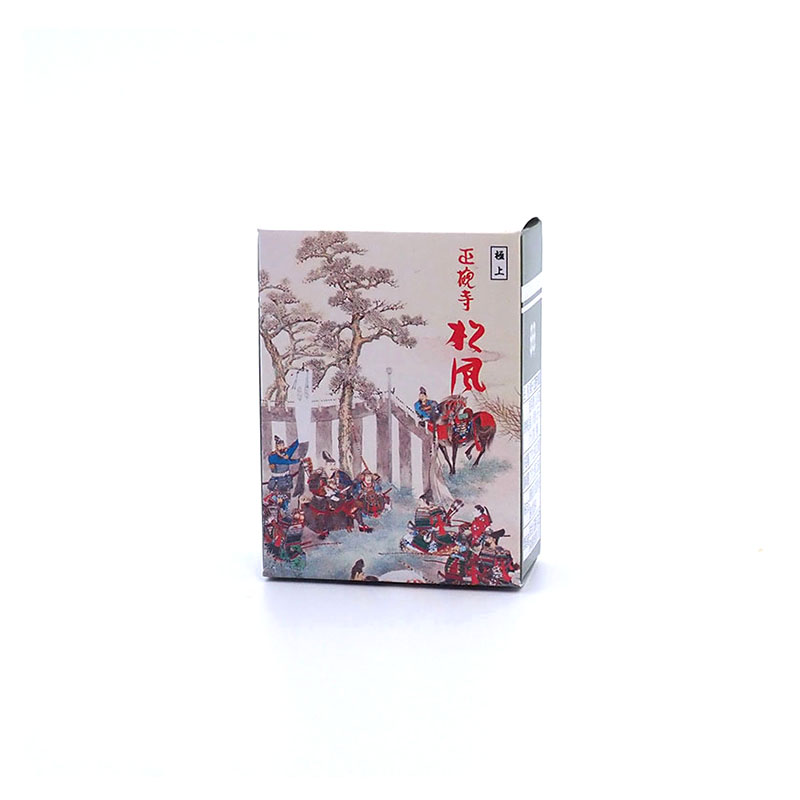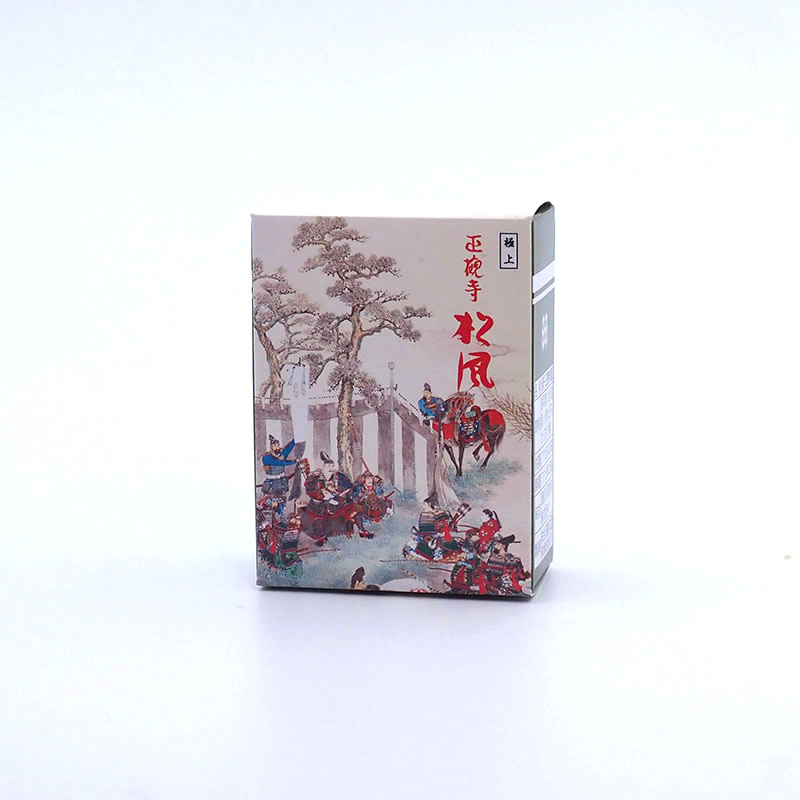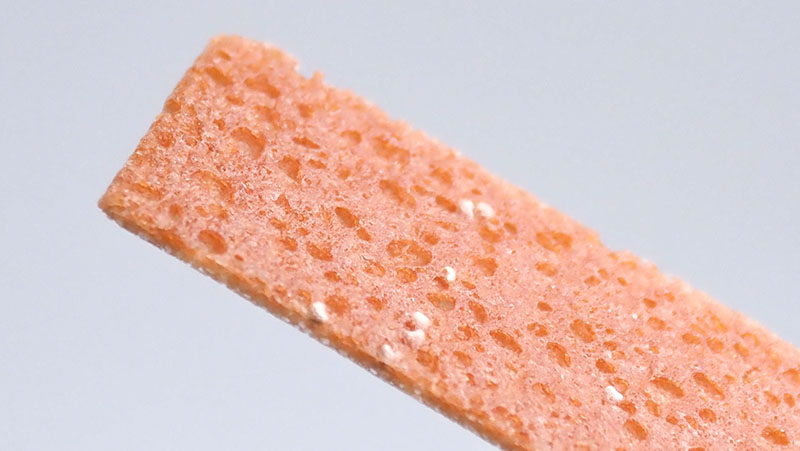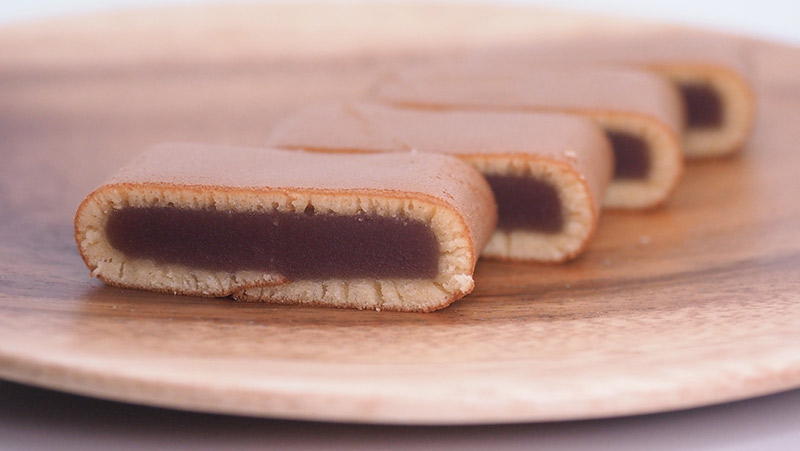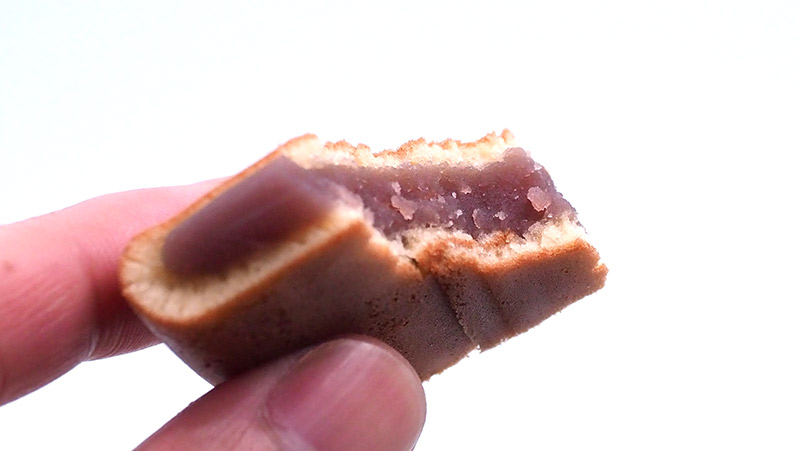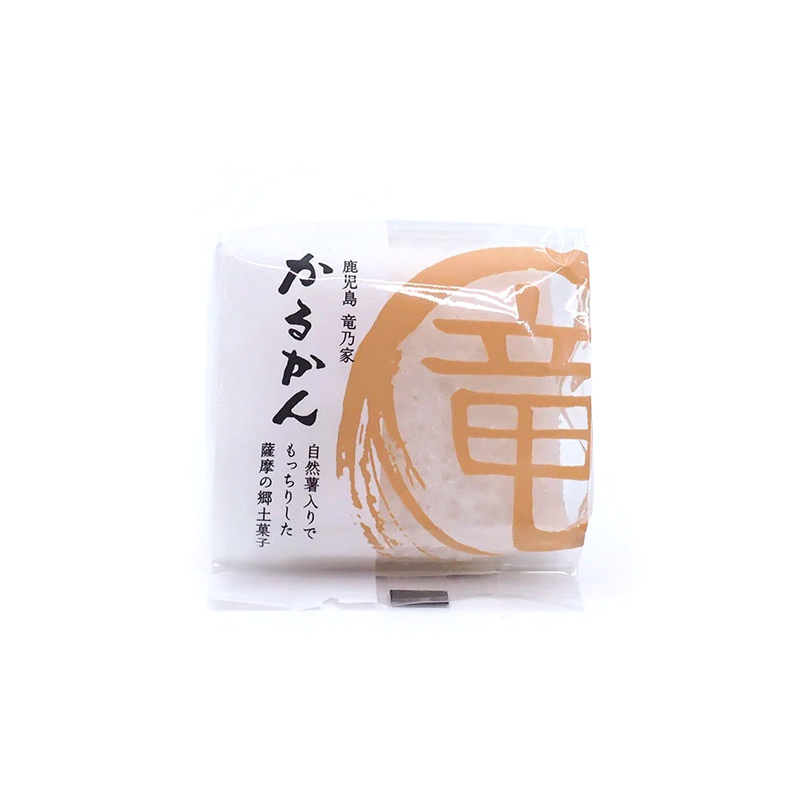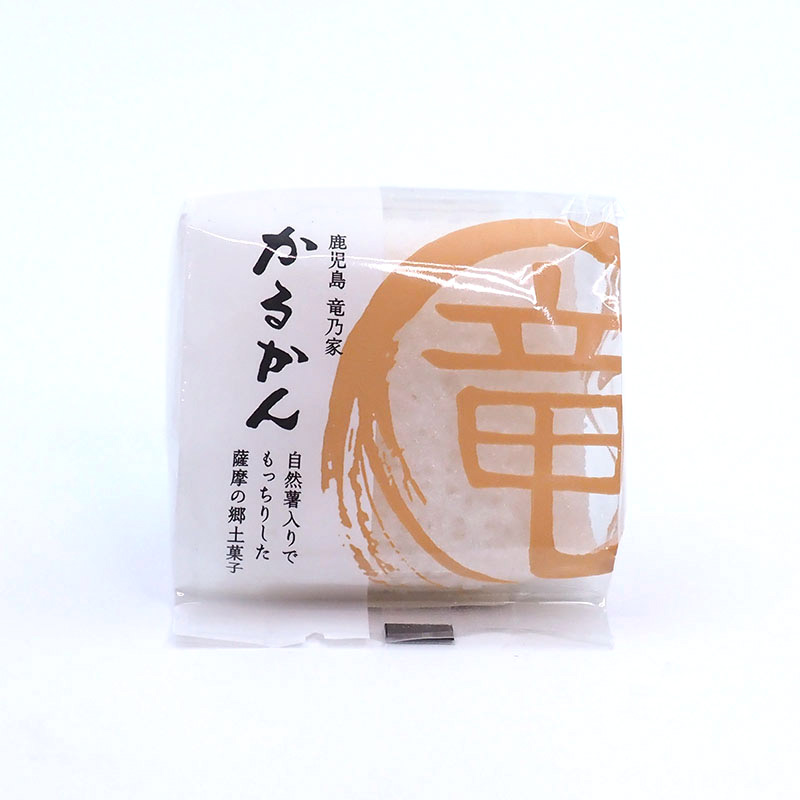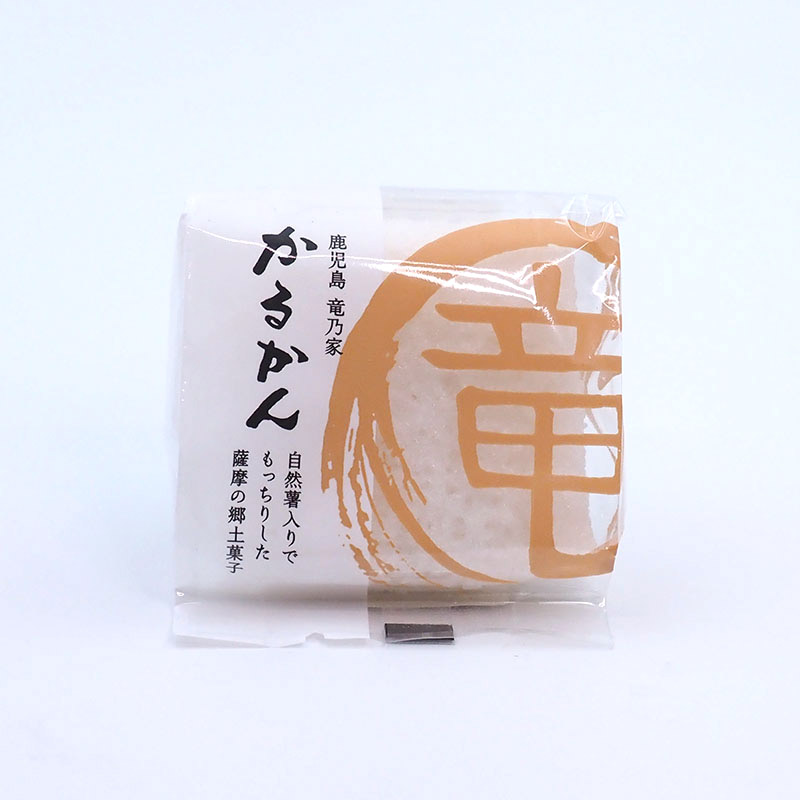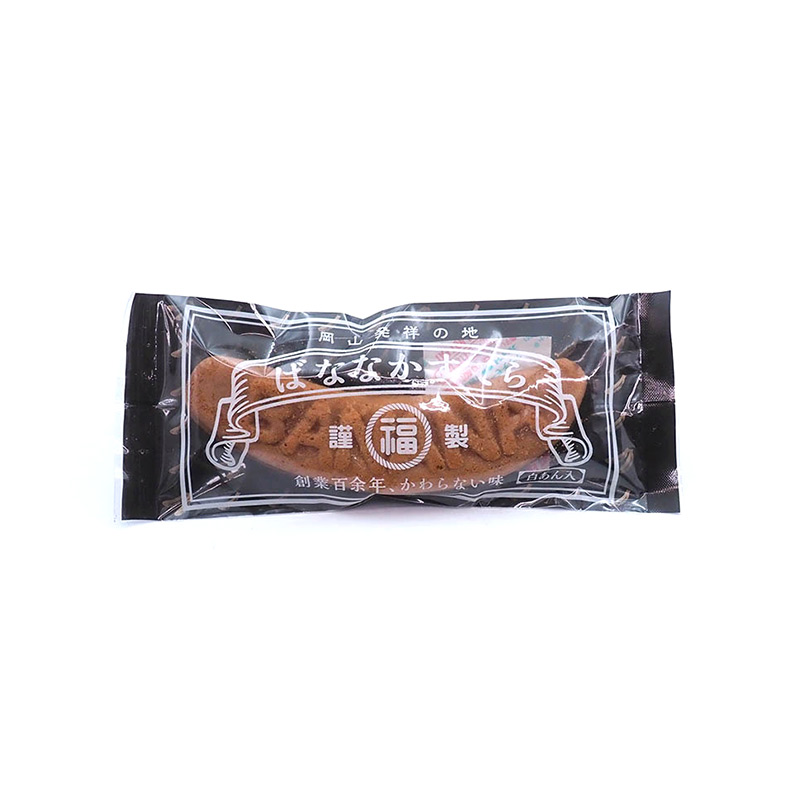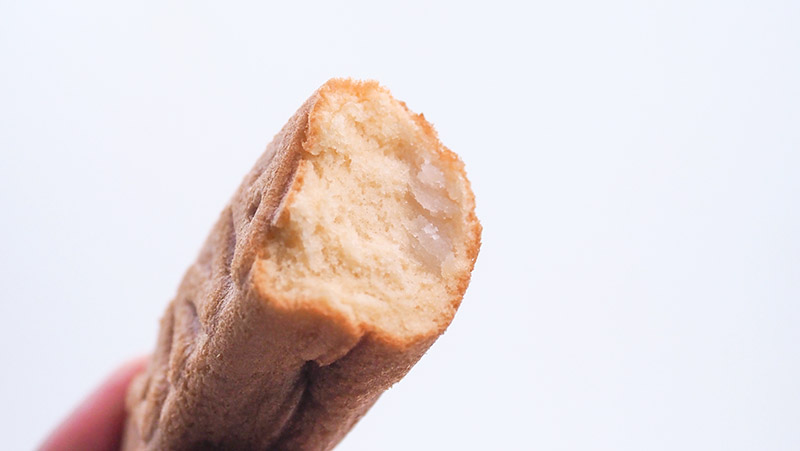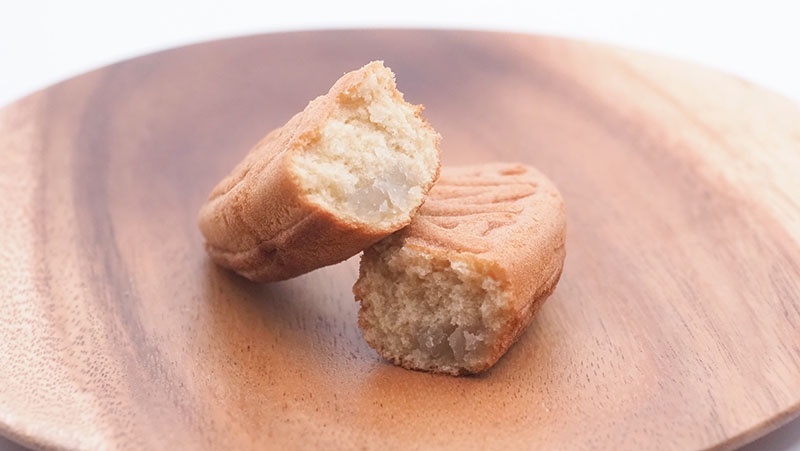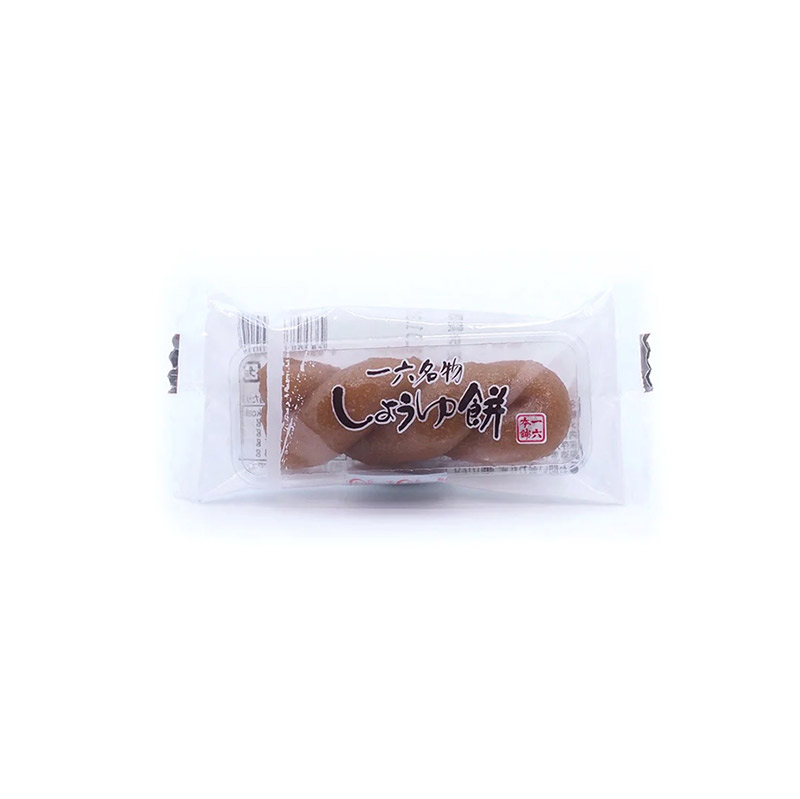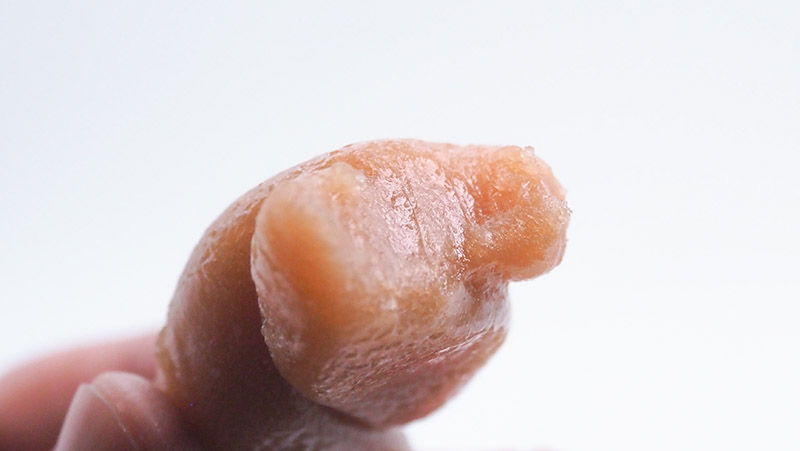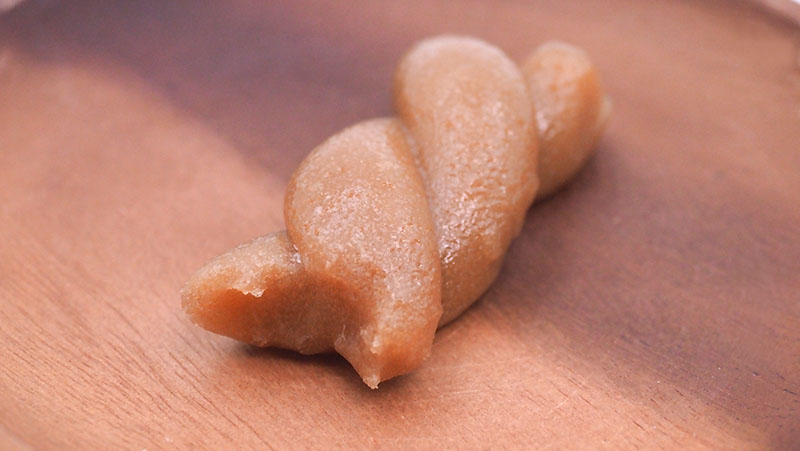1. Heiji Senbei
Simple yet profound taste made with sugar, flour and eggs
"Heiji Senbei", a rice craker made by Heiji Senbei Honten locates in Tsu city, Mie Prefecture, is the store's signature product and the production process has not been changed since its release in 1913. It is an historical sweet. The tubular package contains eight individual packages and each package includes dual crackers. The size of each rice cracker is 5 cm in diameter wrapped in Japanese paper. The packaging is labeled with...
more
2. Noshi-ume
It is as if it is the original ume jelly.
"Noshi-ume" made by Tamaya-Sohonten in Yamagata City is a traditional confectionery from the Yamagata region, made by grinding plum seeds, kneading them into agar, spreading it thinly, and sandwiching it between bamboo hides. It is said that "Noshi-ume" originated in 1818 when it was sold as a medicine. It is a traditional confectionery with very unique origins. Peeling off the bamboo skin reveals a golden jelly-like sheet. The sharp corners, beautiful shape,...
more
3. Monoyama
Traditional sweets close to the origin of manju
"Shiose-Sohonke" is a Japanese confectionery with an astonishing history, having been established in 1349. It is said to be the first store to sell manju in Japan. Momoyama is a type of traditional Japanese confectionery, and is made in many wagashi shops. At first, it was a confectionery made by baking only the dough, but later types with red bean paste inside were created, and now it seems that the ones with...
more
4. Shōgoin-Yatsuhashi
The originator of Kyoto's representative Yatsuhashi
The long-established "Shogoin Yatsuhashi Sohonten" in Kyoto City, Kyoto Prefecture, is known as the birthplace of "Yatsuhashi". The Shogoin Yatsuhashi was created more than 300 years ago in 1689, the same year as the establishment of Shogoin Yatsuhashi Sohonten. It is said that Yatsuhashi, one of Kyoto's representative Japanese sweets, was named "Yatsuhashi" because of its resemblance to the shape of a koto, in memory of Yatsuhashi Kengyō, the founder of koto...
more
5. Mori-no-Yubeshi
Famous for Yubeshi that was delivered to the "Date clan"
"Mori-no-Yubeshi" made by "Kokonoe Honpo Tamazawa" a store in Sendai City, Miyagi Prefecture. The history of Tamazawa, a very long-established Japanese confectionery store, dates back to 1675. The beginning of this very traditional and venerable confectionery dates back 300 years, as "Kokonoe Honpo Tamazawa" used to make "Yubeshi" and deliver it to the Date clan. You can see the translucent, puffy texture and the many walnuts. Yubeshi made in Kyoto and other...
more
6. Saigyō-manjū
Long-established Japanese sweets loved by historical figures
Shinkine Confectionery, which has had a store in Oiso Town, Kanagawa Prefecture since 1894, is famous for its "Saigyō-manjū" a manju loved by many famous people in history, including Shimazaki Tōson, one of the most famous authors of modern Japanese literature, and Yoshida Shigeru, the prime minister of Japan after the war. It is characterized by its very fine and smooth texture. The contrast between the simple branding of "Saigyo" and the...
more
7. Katsuo-tsubu
The fun of cracking and eating with candy that imitates dried bonito
"Katsuo-tsubu" is made by "Yamanishi-Kinryodo" in Kochi Prefecture. At first glance, the package with the fish "katsuo(bonito)" on it does not look like a candy. It seems to be a candy confection that imitates "Katsuobushi (dried bonito)", but it is so heavy that one can feel its stiff mass through the bag. This candy has been made since 1887, when Yamanishi-Kinryodo was founded, and has a history of more than 130 years....
more
8. Yamayaki Dango
Unstoppable delicious dumplings born from "Akiyoshidai no Yama-yaki"
"Yamayaki Dango" made by "Kiren Seika" in Yamaguchi City, Yamaguchi Prefecture, are mini-sized dumpling skewers made of soft rice cake covered with soybean flour and skewered. They may seem like standard dumplings, but they were surprisingly delicious. The name "Yamayaki Dango" comes from the annual "Yamayaki" event held around February at Akiyoshidai, the largest karst plateau in Japan, located in the central-eastern part of Mine City, Yamaguchi Prefecture. The "Yamayaki" is said...
more
9. Genji-maki
Perfect design of traditional pastries
I bought "Genjimaki" from "Mimatsudo" in Kanzoku-gun, Shimane Prefecture. Genjimaki is a famous confectionery in Shimane Prefecture. It seems to have its roots in the Tsuwano area of Shimane Prefecture, and many confectionery stores, especially in this area, seem to make Genjimaki. The packaging of Mimatsudo's "Genji Maki" also has a nice, stylish design, with a faint carp swimming in the background. A long piece of sponge cake dough appears. Cutting this...
more
10. Koreha-Umai
The name means "delicious" and it is exactly.
This manju called "Koreha-Umai (This is delicious)" made by "Kaiundo," a confectioner established in Matsumoto City, Nagano Prefecture in 1884 and having a history of over 130 years. It is a walnut manju, but the origin of the unusual name is that "many customers who tasted it said, 'This is delicious! It became so popular that it became the name of the confectionery as it is. Moreover, it is surprising that this...
more
11. Koin-Monaka
Title of packaging written by Mitsuo Aida
Koundo Honten, whose signature product is "Koin-Monaka" is a very long-established confectionery store that has been in Ashikaga City, Tochigi Prefecture, for more than 100 years. Although it is a standard monaka, it has a very long history and has become a famous confectionary of Ashikaga. I was impressed by the atmosphere of the packaging, and was surprised to learn that the author of this title was Mitsuo Aida, who was born...
more
12. Ogi Yokan
Historic yokan certified as a Japanese cultural asset
”Ogi Yokan" is a famous confectionery of Saga Prefecture. Its history is very old. Originally, the area of Saga Prefecture was the center of sugar culture from the period of the Nanban trade to the period of national isolation, so confectionery techniques using sugar developed, and the Ogi area of Saga seems to have had a very early start in the history of making Japanese sweets, including yokan, even in Japan. It...
more
13. Casdoce
A confectionery with a history of more than 400 years of luxury
"Tsutaya" in Hirado, Nagasaki Prefecture, is the oldest confectionery shop in Kyushu and was founded in 1502, which is amazing. Tsutaya's "Casdoce" is a confectionery with a very long history. It is said to have been introduced by Portuguese missionaries in the Edo period (1603-1868), and since then, it has been loved by the people of Hirado for over 400 years. Out of the luxurious black and gold box came a very...
more
14. Vitamin Castella
Delicious sponge cake with the best crumbly texture.
Vitamin Castella" made by Takahashi Seika Co., Ltd. is famous as Hokkaido's soul food. This is because "Vitamin Castella" has been a part of Hokkaido's pioneering history. The prototype of Vitamin Castella, called "stick Castella," was created in 1921, and around 1950, vitamins B1 and B2 were added and the product name was changed to "Vitamin Castella”. In the postwar period, when many people struggled to procure food, the Castella dough was...
more
15. Matsukaze
Thinness! Wonderful traditional technique
”Matsukaze" is a traditional confectionery made by "Maruho", a very long-established company founded in Kumamoto Prefecture in 1897, and has received various awards in the past. What I took out of the classically designed box was a vacuum-packed pastry. I opened the plastic wrapper to reveal a package wrapped in Japanese paper. This confectionery, which I had never tasted before, was truly a surprise. Unwrapping the Japanese paper, The appearance of the...
more
16. Genji-maki(Yamada Chikufu-ken)
Traditional delicacies originating in Shimane Prefecture
Genjimaki, a famous confectionary from the town of Tsuwano in Shimane Prefecture, is a nationally renowned confectionary. Genjimaki originated in Tsuwano Town, Shimane Prefecture, and has a long history dating back more than 100 years. The one we will eat this time is from "Yamada Chikufu-ken," which is also famous for its long-established Genji-maki rolls. The package design is nice and retro. As I opened it, I found a wrapping paper with...
more
17. Karukan(Tatsuno-ya)
Traditional confectionery that has been made for 300 years
”Karukan" is one of the most representative local confections in Kagoshima. It is a traditional confectionery that has been made for about 300 years. ”Karukan" made by Tatsunoya in Kagoshima City are individually wrapped and easy to eat. Karukan is made with plenty of yam and steamed softly to give it a moist, spongy texture and a deliciously simple sweetness. It has a beautiful white spongy and unique texture. It is quite...
more
18. The original Banana Castella
Interesting history of Banana Castella
Did you know the history of "Banana Castella" and its originator? There are various theories as to where it originated, but Fukuoka Seisakusho's banana sponge cake has been made since the Taisho era (1912-1926), and its tradition and taste are well-known. The word "BANANA" is dynamically imprinted on Castella. It is a pop design. The balance of the banana flavor and the rustic, slightly sweet sponge cake dough is very important. If...
more
19. Shoyu-mochi (Ichiroku-honpo)
Sweet and spicy rice cake with ginger soy sauce aroma
I bought "Shoyu Mochi" made by Ichiroku Honpo in Matsuyama City, Ehime Prefecture. This confectioner is famous for its "Ichiroku Tart". The shape of this soy sauce rice cake is unique and interesting, and is made by twisting a stick-shaped rice cake. It is said to be a confectionery that has been made since the Ichiroku Honpo's establishment, and has been made for more than 130 years. The rice cake is glossy...
more


